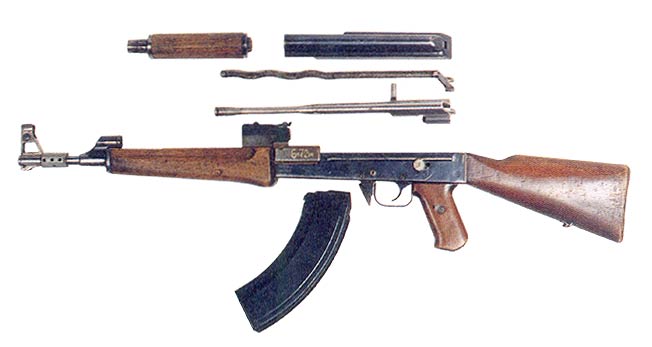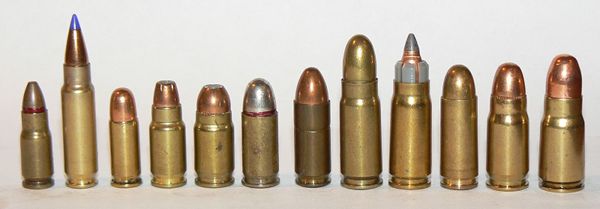Energy transfer
How energy transfers from one object to
another is very important to how it performs, and as we will see it
makes the
physics more complicated.
There are no specific formulas to explain how energy
is transferred from
one system to another.
Rotational motion
A weapons recoil when firing is due to the fact that some of the energy of the explosion in the chamber is turned into rotational motion.

http://world.guns.ru/assault/ak47_2.jpg
This rotational motion is because of
the moving parts within the gun, and there relation to the center of
mass. The
entire body of the gun has a particular center of mass, As the weapon
is fired
the internal piston absorbs that force, and uses it to load another
bullet into
the chamber in a mechanical process.
Because there parts a placed above of the center of
mass of
the hole system, they imparted some rotational motion into the system.
The
person firing the weapon experiences this as the force pushing upwards.
Many manufacturers of have tried a verity of
different
things to reduce this. One method employed in the M16 assault rifle is
to have
two different pistons that work in different directions. This causes
some of
the rotational motion to cancel its self out.
Surface Area and density of bullets
The Surface area, shape and density of a bullet affect its stopping power.
 http://world.guns.ru/ammo/ammo_pics/th_gallery_pistol_1.jpg
http://world.guns.ru/ammo/ammo_pics/th_gallery_pistol_1.jpg
Density of a bullet can
be increased by adding a heavier materiel to the bullet. This changes
the
amount mass, and increases the amount of force the bullet impacts with.
The surface area of the bullet effects how well the
bullets
penetrate its target. With a round flat tip, the bullet will come to a
stop
faster, imparting more of its energy sooner.
A fine tip on a bullet will help cut through
material
faster. This is used to penetrate anything from a bulletproof vest, to
a wall,
or tank armor. This can have negative effects when impacting something
soft,
like flesh, because the bullet can go straight through its target, and
fail to
impart all of its energy.